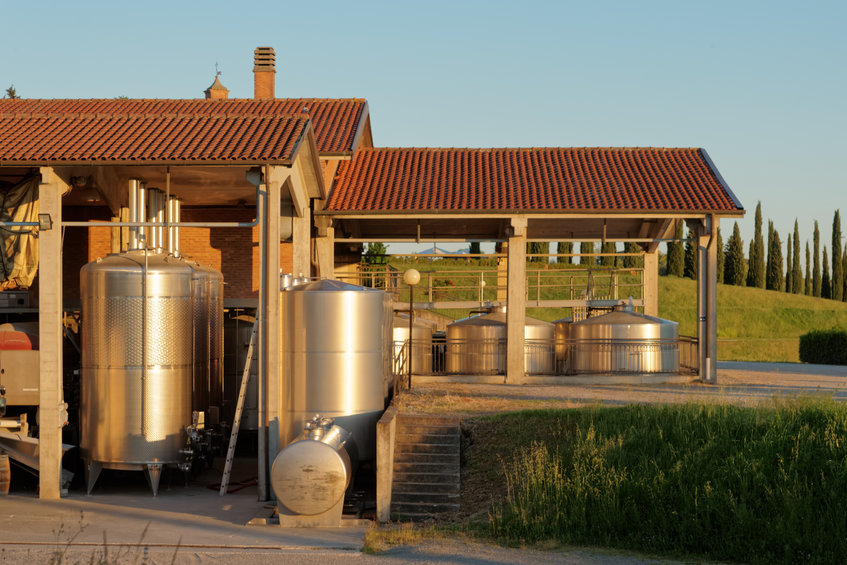Accounting Standard Codification (ASC) 842 is the new lease accounting standard that is updating the accounting practices within the winery industry as to how financial statements are prepared and presented in regards to all leases including equipment and barrel leases.
This blog will serve as an overview of the new ASC 842 accounting standard and some of the changes that are applicable to the wine industry. We’ll start with a brief introduction of the goals that the Financial Accounting Standards Board (FASB) hopes this new accounting standard will achieve before moving forward into how you can expect to prepare your financial statements under the new ASC 842 reporting guidelines.
Goals of ASC 842
There are three main goals of this new accounting standard:
- Streamline lease accounting under the US GAAP standards
- Increase transparency and comparability surrounding lease arrangement liabilities
- Reduce total taxable income of your winery through increased financial reporting.
The New Definition of “Lease” Under ASC 842
Under ASC 842, a lease is defined as contracts or portions thereof that grant “control” of a specified asset for a definite period of time in exchange for payment made by the lessee. The definition of “control” at play here is one in which the lessee is able to remain in majority of the economic ownership of the leased asset, meaning that the lessee is the sole or majority recipient of economic benefit of the asset.
Now that we’ve covered a basic definition and goals of ASC 842, let’s talk about what it actually looks like in your day-to-day accounting activities.
Updates to Financial Reporting from ASC 842
The main change in terms of financial reporting from ASC 842 is in regards to how operating leases are recorded on your balance sheet. Traditionally, lease accounting has been recorded differently based on lease type – operating or capital. Operating leases are similar to rental agreements for your equipment and barrels. Capital leases are structured as a means of financing a purchase.
Capital leases are beneficial to wineries as they can manage cash outflows during the duration of lease instead of purchases. However, they also increase the winery’s debt shown on the balance sheet. Operating leases have traditionally been recorded away from the balance sheet, a practice known as “off-balance sheet” reporting.
The transparent nature of the ASC 842 update does away with the “off-balance sheet” reporting, requiring that all lease future payments be recorded as liabilities on the balance sheet and financial statements.
Impact of ASC 842 on Winery Financial Statements.
Wineries who lease their equipment, barrels, and vineyards through operating leases will see an immediate impact on their assets and liabilities report which could further impact financial debt lease covenants.
Take Inventory of Existing Operating Leases
The first step for wineries prior to adoption and implementation of the new lease accounting is to understand outstanding leases and evaluate them for the accounting impact. They should consider its duration of existing lease agreements and options to renew contract terms. Probability of renewal options should be considered at the time of adoption and implementation.
Balance Sheet Presentation
Both finance and operating leases are presented as Right-of-Use (intangible) asset and lease obligations separately in the balance sheet. There will be Finance lease – Right-of-Use assets, Finance – lease obligations, Operating lease – Right-of-Use assets, and Operating – lease obligations. Right-of-Use assets are amortized over the term of lease through related expirations. Lease obligations decrease as scheduled payments and are made through the term of lease agreements.
Income Statement Presentation
Finance lease – Interest expense on finance leases is presented below Income from Operations in the income statement. Amortization expense of the finance lease – Right-of-Use is presented in the operating section of the income statement as other operating assets’ depreciation expense is recorded.
Operating lease – Both amortization of operating lease – Right-of-Use and the difference between cash payments and reduction in operating lease liabilities are presented as lease expense. No amortization is recognized for operating leases.
Effective Dates and Transition Method
ASC 842 is effective for the period beginning after December 15, 2021. Adoption of ASC 842 must be based on a modified retrospective transition approach. There are two options for wineries to select. The simple way is to adopt and record the impact of ASC 842 as of January 1, 2022.
Need Help With your ASC 842 Reporting?
While the ASC 842 certainly comes with a set of new recording guidelines, it has the potential to significantly impact financial reporting covenants. If you need some help with your ASC 842 adoption, and on-going reporting, Allen Wine Group is ready to assist. Contact us today to get started.

